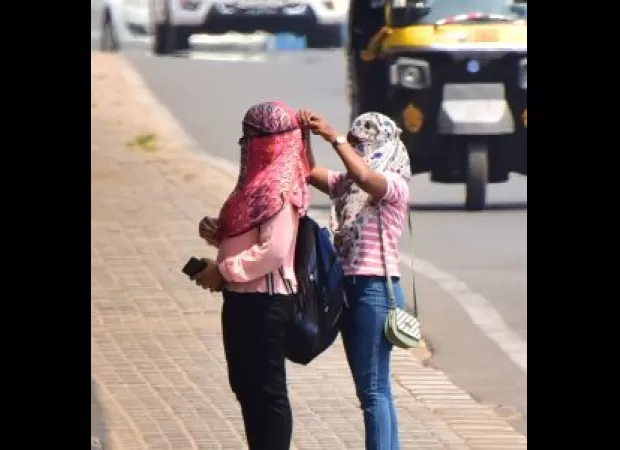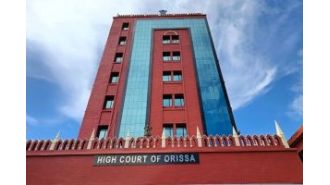Odisha's Boudh experiences high temperature of 44.6 degC as per IMD, no respite from hot weather expected.
Heatwave continues in east India and southern regions with temperatures above 44 degrees Celsius in 13 places in Odisha, West Bengal, Telangana, Andhra Pradesh, and Tamil Nadu.

New Delhi was once again hit with a scorching heatwave on Friday, as temperatures soared above 44 degrees Celsius in 13 different locations across east India and the southern peninsular region. The intense heat continued to affect areas such as Odisha, Gangetic West Bengal, Telangana, Andhra Pradesh, and Tamil Nadu.
According to the India Meteorological Department (IMD), maximum temperatures reached 43-46 degrees Celsius in various parts of Andhra Pradesh, Telangana, Odisha, Vidarbha, Madhya Maharashtra, and 40-43 degrees in places like Gangetic West Bengal, Marathwada, and north interior Karnataka. Other states like Rajasthan, Uttar Pradesh, Jharkhand, Chhattisgarh, Madhya Pradesh, and Gujarat also experienced high temperatures.
The highest maximum temperature recorded on Friday was 46.3 degrees Celsius in Nandyal, Andhra Pradesh, while other locations like Boudh in Odisha saw a scorching 44.6 degrees. Khammam, Cuddapah, Erode, and Kalaikunda also saw high temperatures ranging from 43.4 to 46.2 degrees.
The IMD has predicted that the ongoing heatwave spell in east and south peninsular India will continue until May 5-6 before starting to subside. In fact, the Met office has warned that above-normal maximum temperatures can be expected in most parts of the country throughout May, with potentially high numbers of heatwave days in the northern plains, central region, and adjoining areas of peninsular India.
The month of April has already seen record-breaking temperatures in east, northeast, and southern peninsular India, leading to health warnings from government agencies and the suspension of in-person classes in some schools. Several locations even recorded their highest-ever April day temperatures. However, thanks to five active western disturbances, there were also instances of rainfall, thunderstorms, and hail storms in north and central India, helping to prevent heat waves.
Despite this, IMD data shows that heat waves in April 2021 were significantly worse than they were in 2020, the warmest year on record. And unfortunately, the trend is expected to continue in May, with around 8-11 heatwave days predicted for regions like south Rajasthan, west Madhya Pradesh, Vidarbha, Marathwada, and Gujarat. The remaining parts of Rajasthan, east Madhya Pradesh, Punjab, Haryana, Chandigarh, Delhi, Uttar Pradesh, and other areas may see 5-7 heatwave days.
Normally, the northern plains, central India, and adjoining areas of peninsular India experience only 3 heatwave days in May. However, this year, India has already faced two spells of heatwaves in April, from April 5-7 and April 15-30. The IMD has attributed the prolonged heatwave spell in east, northeast, and south peninsular India to the absence of thunderstorms and the presence of an anticyclone at lower levels over the west central Bay of Bengal and the adjoining eastern coasts of India. This has caused the sea breeze to be cut off in places like Odisha and West Bengal.
In April, the average maximum temperature in south peninsular India was 31 degrees Celsius, the second-highest since 1901. Meanwhile, the mean temperature in east and northeast India was the highest since 1901. The IMD also noted that above-normal maximum temperatures have been occurring more frequently in south peninsular India since the 1980s. In fact, the region only received 12.6 mm of rainfall in April, making it the fifth-lowest since 1901 and the second-lowest since 2001.
According to IMD data, Gangetic West Bengal saw the highest number of heatwave days in April in 15 years, while Odisha experienced the longest heatwave spell since 2016. This is all happening amidst weakening El Nino conditions, which the IMD had previously warned could lead to extreme heat during the April-June period, coinciding with the seven-phase Lok Sabha elections. In fact, voters in the second phase of elections on April 26 had to brave the intense heat while exercising their right to vote. The next phase of polling for 94 constituencies across 12 states will take place on May 7.
The weather office had originally predicted 4-8 heatwave days in different parts of the country in April, but the actual number turned out to be much higher. And unfortunately, the outlook for the entire April-June period is also grim, with an expected 10-20 heatwave days compared to the normal of 4-8 days.
1 Views






